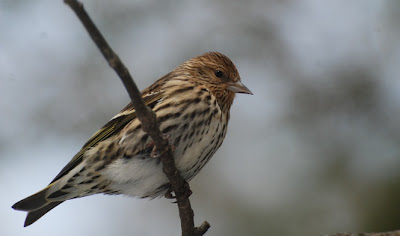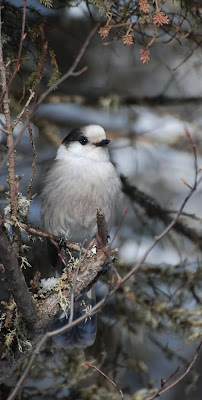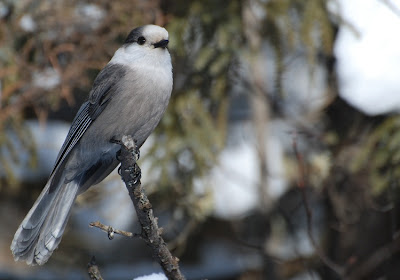My apologies for such a dreary post--just a list--but perhaps in a few years this inventory will provide a few minutes of diversion. This is the list of birds that my girlfriend Alison and I observed on our float down the Manistee River from the Deward area to No. 19 Rd near Mesick from July 4-7, 2012.
Canada Goose—small numbers, mostly in scattered
family groups incapacitated by molt. One such group that I splashed with my
paddle scrambled up the bank in panic, including one bird that flapped and
flopped and fell backwards.
Wood Duck—seen daily, but very sparsely. Probably
fewer than 15 for the entire float.
Mallard—common. Many family groups, ranging from
fully grown “ducklings” to very young, recently hatched broods.
Hooded Merganser—not seen until the second day of the
trip, but after that very common on the lower part of the river (past Sharon
Bridge).
Common Merganser—few; about a dozen total
Horned Grebe—surely the most unexpected bird of the float, a
singleton paddling around the river several miles upstream from the CCC bridge.
A Horned Grebe on such a small shallow river would be unusual at any season,
but this species is unprecedented in this part of the world in the middle of
the summer. It was in full alternate plumage and appeared to be in good health.
Great Blue Heron—surprisingly scarce, only three or four.
Green Heron—a handful (half a dozen?) scattered along the
entire length of the river. Most of them demonstrated their well-deserved
nickname “Fly-up-the-Creek” by flushing ahead of the canoe many times before
finally turning around.
Turkey Vulture—two or three
Osprey—one, on the final day of the float
Bald Eagle—five, all adults. On the second day, I chucked a
rubber duckie that I had found in some jetsam at a perched bird, much to its
indignation.
Sharp-shinned Hawk—one bombed across the river on our second
day
Red-shouldered Hawk—a few (5) heard calling from along the
river
Broad-winged Hawk—half a dozen or so
Spotted Sandpiper—common. We spotted three young families
near the end of our float on the third day. We paused for the first family and
captured one of the very young chicks running around at the edge of the river.
Solitary Sandpiper--one, an early migrant, flushed from a
mudbank on our second day.
American Woodcock—two. Oddly, one was still displaying at
the CCC campground. One flew by our canoe at dusk in the last mile or two of
the last day.
Herring Gull—Alison saw one; I remain skeptical
Mourning Dove—No comment
Yellow-billed Cuckoo—one, on the last day.
Black-billed Cuckoo—one calling in the middle of the night
at the CCC campground.
Great Horned Owl—a fledgling begging around midnight on the
first day (i.e., night) of the float near the headwaters.
Barred Owl—three families, the first one seen and
photographed shortly downstream from the CCC campground on the second day.
Common Nighthawk—a few heard at dusk most days. A large
group seen flycatching high over the river in the late afternoon of the second
day.
Eastern Whip-poor-will—heard every night, with impressive
numbers (at least a dozen) heard in the few miles we floated on the first
night. We even spotlighted one perched in a pine at the river’s edge.
Ruby-throated Hummingbird—only a few.
Belted Kingfisher—extremely common. At least seventy or
eighty seen over the course of the trip. We noted several nests farther down on
the last two days of the float in the high sandy banks in that area.
Red-headed Woodpecker—Alison saw one during our dinner break
on the second day; several miles later we both heard one.
Red-bellied Woodpecker—two or three in the last quarter of
the trip.
Yellow-bellied Sapsucker—abundant. At evening on the second
day, we saw one perched on a telephone pole drumming on a metal casing, seeming
to gloat over its superior volume.
Downy Woodpecker—uh-huh
Hairy Woodpecker—yeah
Northern Flicker—common
Pileated Woodpecker—surprisingly scarce; only a couple heard
during the entire trip
Eastern Wood-Pewee—very common
Least Flycatcher—a single singing bird just downstream from
the CCC bridge
Eastern Phoebe—modest numbers, particularly around bridges
and cabins
Great Crested Flycatcher—fairly common; perhaps 10 or 12 a
day.
Eastern Kingbird—small numbers. Most numerous on the first
day.
Yellow-throated Vireo—a single singing bird on the second
day.
Blue-headed Vireo—singing birds were fairly common,
particularly around Red Pine plantations
Red-eyed Vireo—irritatingly abundant
Blue Jay--common
American Crow—just a couple heard low down on the last day
Common Raven—heard every day, but sparsely enough that every
single one was enjoyed and appreciated.
Northern Rough-winged Swallow—small numbers in the last
quarter of the float where there were sandy banks for them to nest in.
Tree Swallow—only a few, nearly all in the upper reaches of
the float.
Black-capped Chickadee--around
Tufted Titmouse—one or two pretty far downstream on the
second day in an area with lots of deciduous trees.
Red-breasted Nuthatch—common wherever there were conifers
(i.e., most of the float)
White-breasted Nuthatch—present the whole way
Brown Creeper—scattered small numbers (perhaps 10 total),
particularly in areas with lots of spruce
House Wren—mostly limited to areas that had lots of cabins
Winter Wren—we heard singing birds every day, but in small
numbers—perhaps twenty total?
Golden-crowned Kinglet—a few
Eastern Bluebird—one or two in the upper reaches
Veery—two singing birds
Hermit Thrush—common
Wood Thrush—just a couple
American Robin--everywhere
Gray Catbird—not everywhere; only two for the whole float
Brown Thrasher—one chipping fella on the morning of the
third day
European Starling—a flyover flock of about fifty birds late
in the evening on the second day ruined our fantasy that we would go the entire
trip without seeing any.
Cedar Waxwing--lots
Ovenbird--omnipresent
Louisiana Waterthrush—a chipping bird far downstream on the
third day was almost surely this species judging from the habitat.
Northern Waterthrush—about two singing birds mid-way through
the float
Black-and-white Warbler—scattered singing birds along the
whole float; perhaps 8 or 9 total?
Nashville Warbler—very common, particularly in the upper
reaches of the river.
Mourning Warbler—fairly common, particularly in the lower
reaches of the river; we heard probably fifteen on the third day.
Common Yellowthroat--common
American Redstart—common on the second and third days of the
float
Cape May Warbler—three singing males; two in the upper
reaches on the first day (Kalkaska County) and one near the end of the float
(Wexford County)
Northern Parula—one singing bird on the second day
Blackburnian Warbler—three or four singing birds, mostly in
the upper reaches.
Pine Warbler—abundant wherever pines were, which was along
most of the float
Yellow-rumped Warbler—common; several dozen total
Black-throated Green Warbler—very common, though oddly we
heard none north of M-72.
Canada Warbler—just one or two singing birds
Chipping Sparrow—we had two subspecies of Chipping Sparrows…cabin
lawn Chipping Sparrows, and Red Pine plantation Chipping Sparrows
Field Sparrow—two singing birds
Song Sparrow—everywhere, kinda
Lincoln’s Sparrow—only one, a singing bird in a boggy area
north of M-72
Swamp Sparrow—small numbers of singing birds in marshy areas
White-throated Sparrow—lots of peabodiers, mostly in boggy
areas (e.g., between 612 and M-72)
Dark-eyed Junco—a few here and there
Scarlet Tanager—very common in the last third or so of the
float. Prior to that, very sparse.
Northern Cardinal—small numbers (about five) near the end of
the float
Rose-breasted Grosbeak—surprisingly uncommon, at least in
comparison with the Ausable…maybe ten or a dozen a day
Indigo Bunting--yuppp
Red-winged Blackbird— common around marshy areas…otherwise,
not common
Common Grackle—abundant on the first day (especially north
of M-72), but very few/none seen later
Brown-headed Cowbird--some
Baltimore Oriole—here and there
Purple Finch—small numbers (20 total), including birds
visiting cabin feeders
Pine Siskin—one or two flyovers heard
American Goldfinch—very common
Evening Grosbeak—small numbers (8ish?)
















































